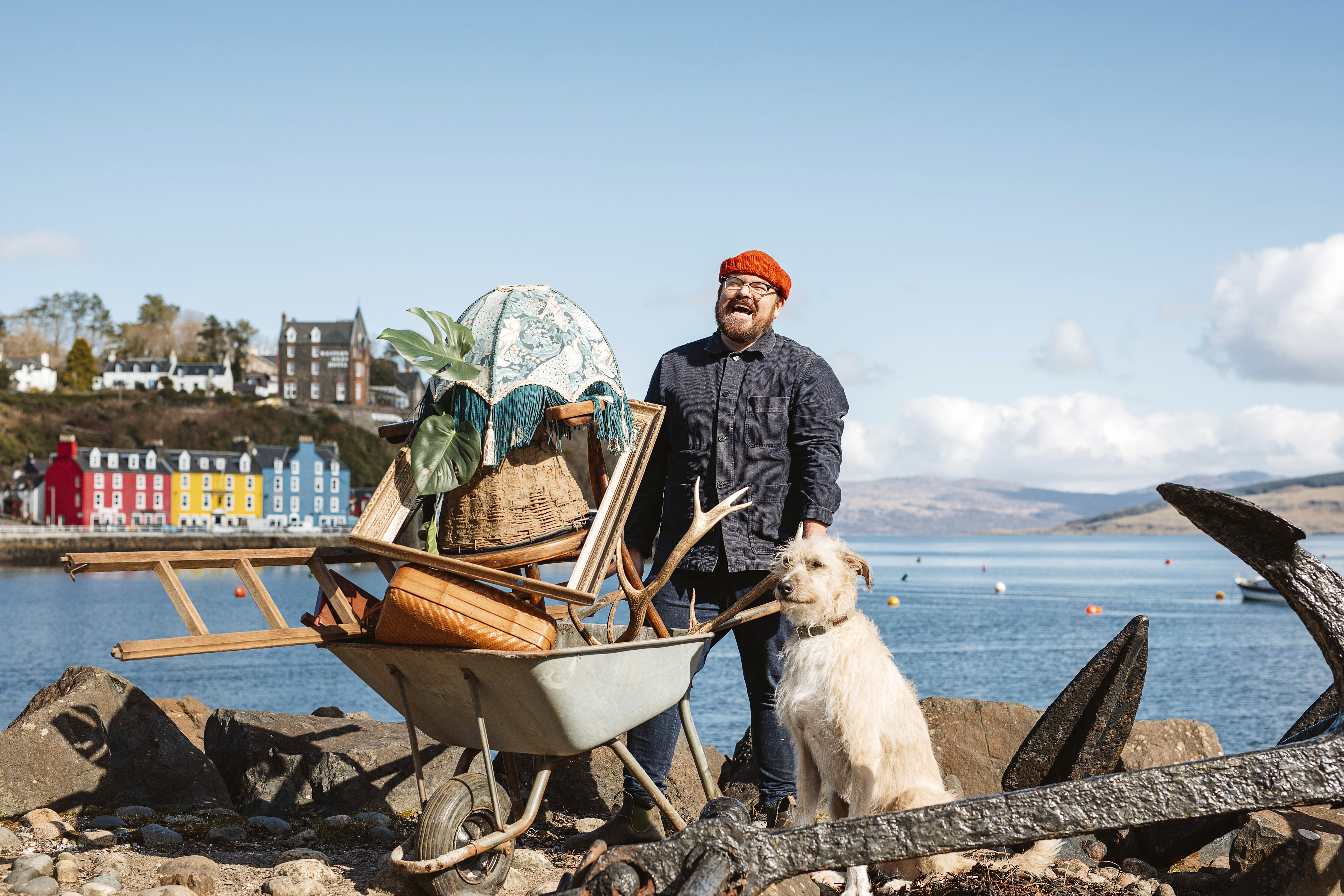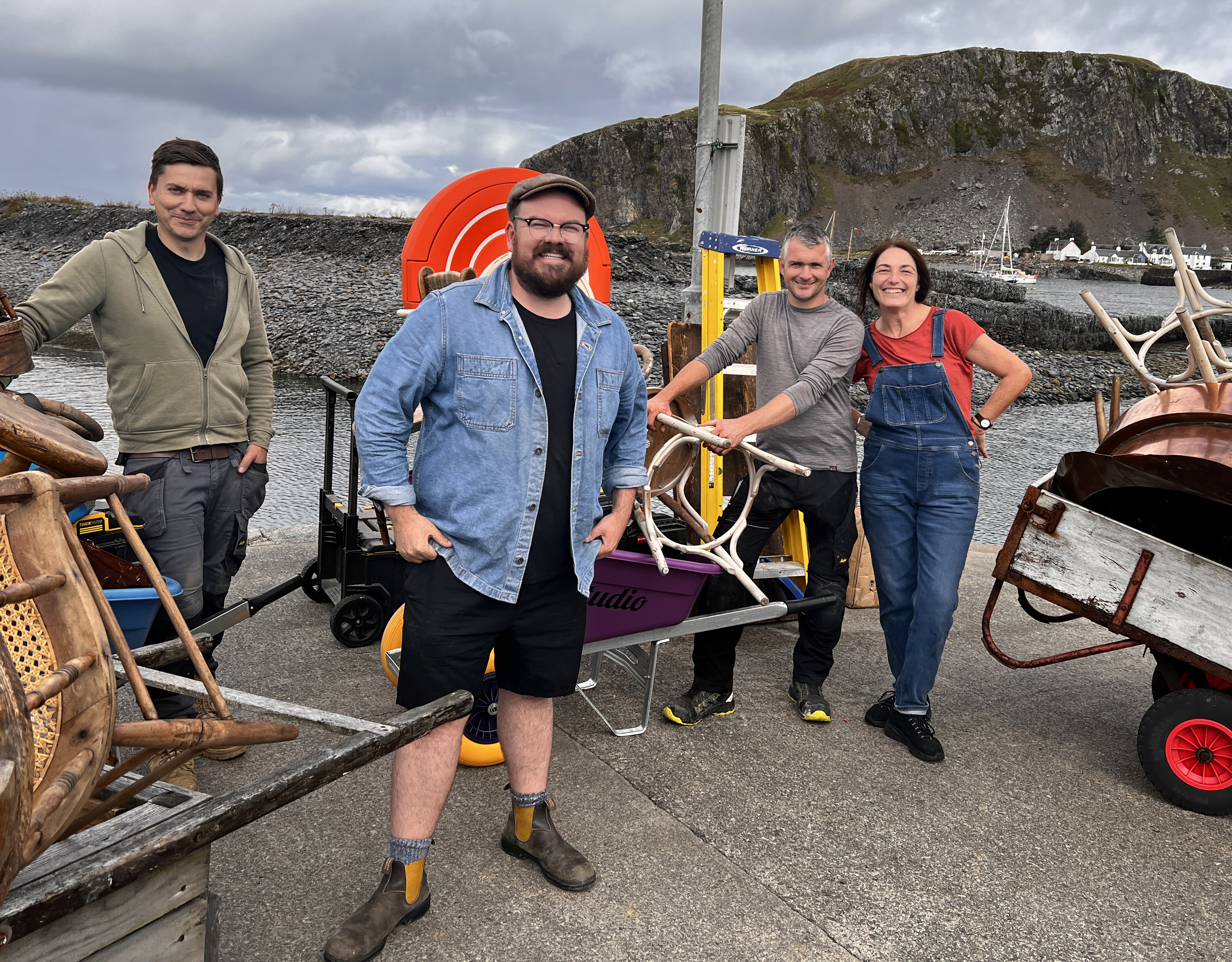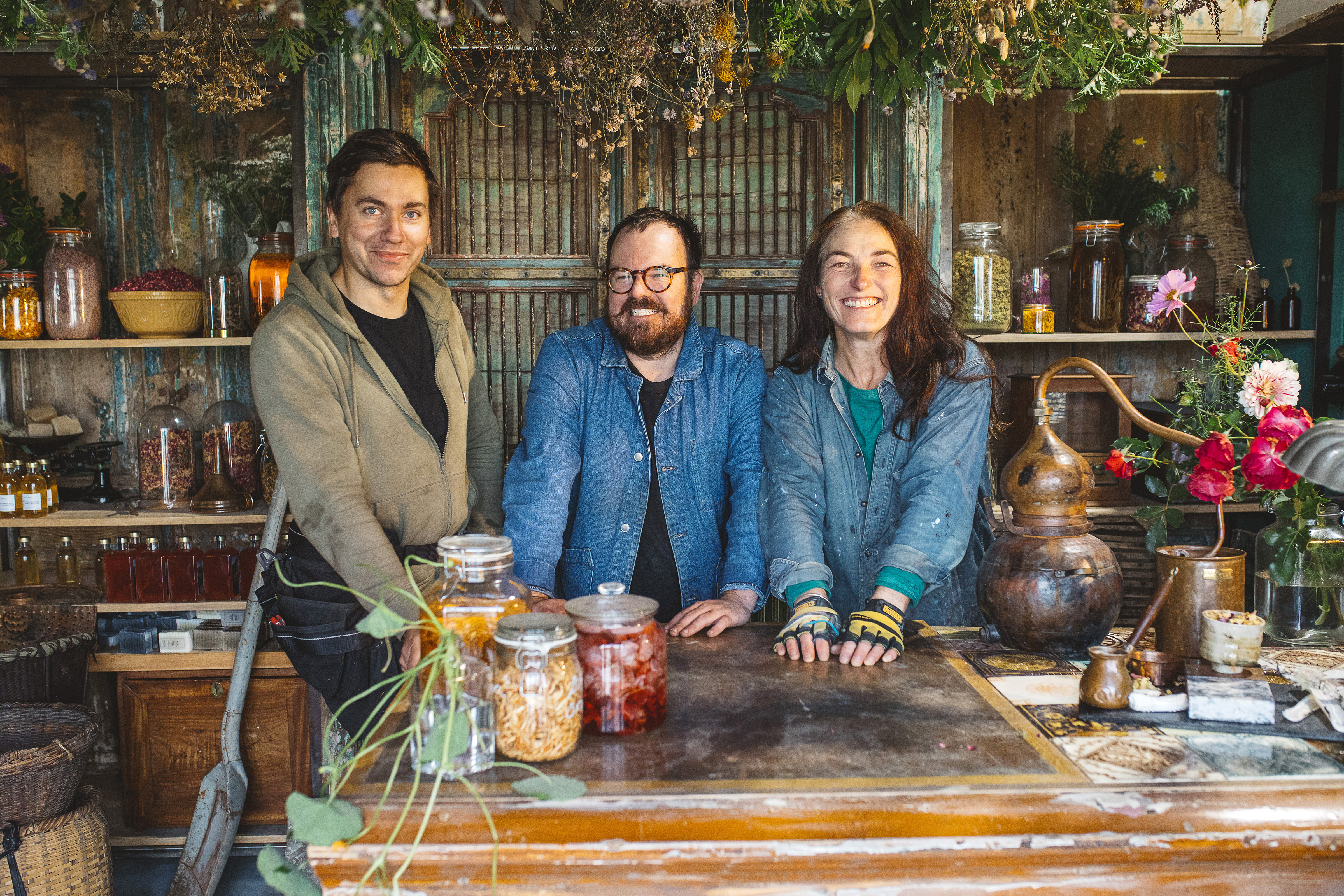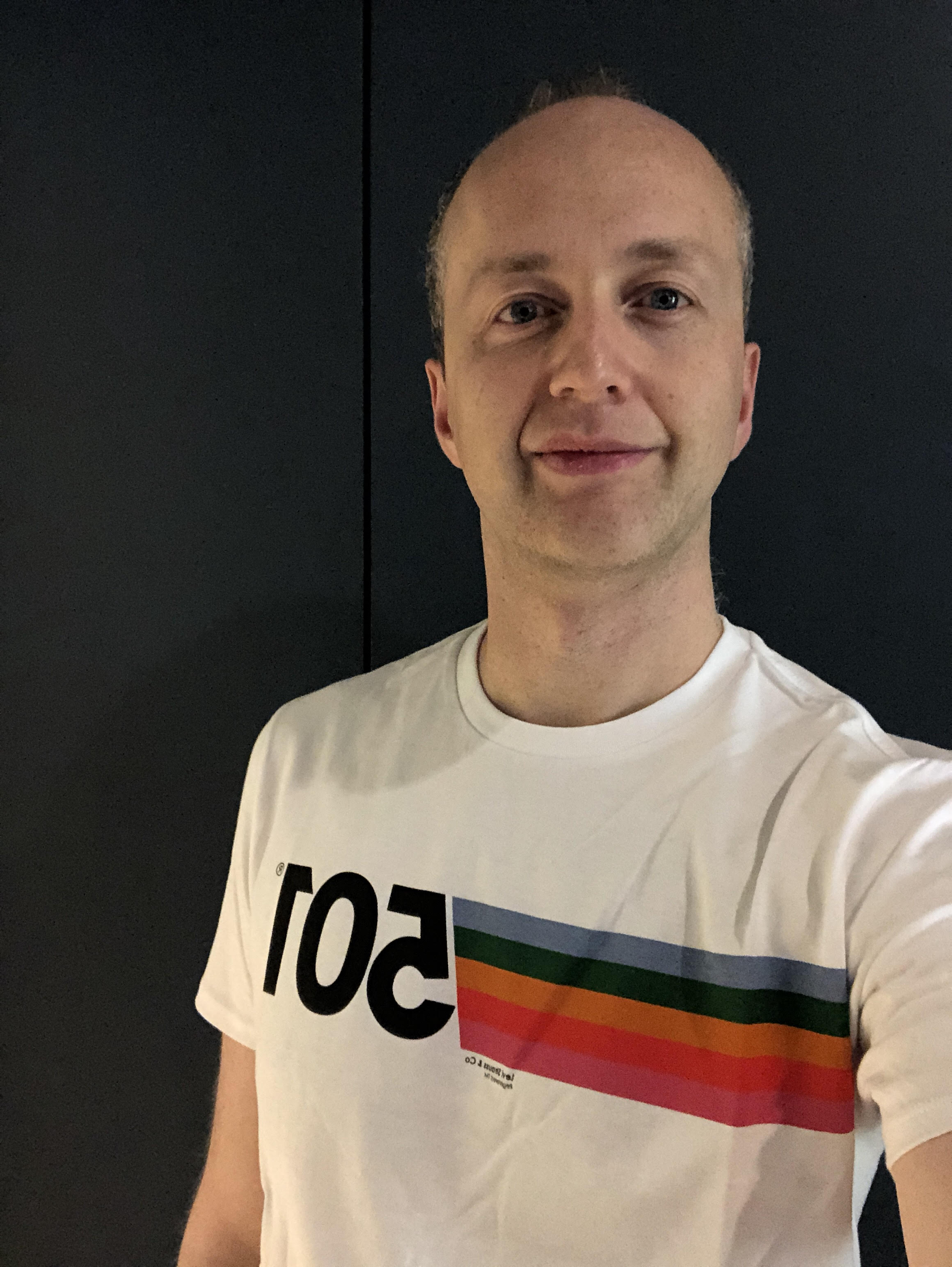Designing The Hebrides season 2: release date, locations, episode guide, interview and all we know
Designing The Hebrides season 2 sees Banjo Beale work his design magic across the islands once again.

Designing The Hebrides season 2 sees the return of Banjo Beale — winner of season three of Interior Design Masters — as he sets out once again to bring his sense of interior style to more unexpected places across Scotland's Hebridean islands.
As ever, he'll face challenges along the way, not limited to small budgets and the unaccommodating weather, but with the help of his trusted team of tradespeople and a can-do attitude, Banjo is determined to give his clients' properties a makeover that will breathe new life into the buildings.
Here's everything you need to know about Designing The Hebrides season 2...
Designing The Hebrides season 2 release date
All six episodes of Designing The Hebrides season 2 will be available on BBC iPlayer from Monday, September 16. The series will also be transmitted weekly on BBC Scotland from Monday, September 16 at 10pm, and on BBC2 from Tuesday September 17 at 7pm.
Designing The Hebrides season 2 locations
Banjo will be visiting different islands across the Hebrides in season 2, including Easdale, Harris, Iona, South Uist and his adopted home of the Isle of Mull.

Who is the narrator of Designing The Hebrides?
Each of the episodes is narrated by actor Ashley Jensen, star of Shetland, Agatha Raisin, Extras and Ugly Betty, to name just a few!
Designing The Hebrides season 2 episode guide
Episode 1 — The Puffer Pub: Banjo heads to the tiny island of Easdale — the smallest inhabitant island in the inner Hebrides, with a population of just 60 — to give the Puffer Pub a much-needed makeover. The pub's remote location means the team will have to transport materials using wheelbarrows, but logistics aren't the only factor; the locals have a strong sentimental connection to the pub which has been the beating heart of this tight-knit community for decades.
The latest updates, reviews and unmissable series to watch and more!
Episode 2 — Apothecary: Banjo is tasked with making over an apothecary on the Isle of Harris — but while the space is big, the budget is small! Banjo enlists friend Chris and his husband Ro to pick flowers for him to dry and use to dress the space, while herbalist Amanda lets Banjo raid her loft to find objects he can use in his design...
Episode 3 — Honesty Boxes: Banjo helps two small island businesses who survive by selling their produce through honesty boxes. On the Isle of Mull, in the village of Dervaig, Banjo meets lobster fisherman Jamie and his wife Mary, who runs a small sandwich shop. Too busy to open the shop full time, they sell their produce in a local honesty box, and they want Banjo's help to make it stand out. Meanwhile, in the Outer Hebrides, Banjo helps carer Donna with her side hustle selling homemade ice cream, which she currently sells from an honesty box run out of an old livestock trailer, but she's looking for something more imaginative and fun.
Episode 4 — Iona Wool: Banjo and the team make over a wool and craft shop on the island of Iona. Because of the beautiful colours of their stock, they don't want too much colour added to the shop itself, which is a challenge for Banjo — but he comes up with a Hebridean modern concept that he hopes will warm up the shop without overshadowing the gorgeous woollen goods.
Episode 5 — Western Isles Hotel, Mull: Banjo's on home turf again, where his brief is to transform a hotel salon into a spa by day and a bar by night. The Western Isles Hotel overlooking Tobermory harbour has been welcoming guests for over 140 years, but it's lost some of its spark lately, so General Manager Brian wants Banjo's help to revitalise the iconic building.
Episode 6 — The Croft: For the final episode of the series, Banjo returns to South Uist, where crofters DJ and Lindsay want him to transform their breezeblock garage in Loch Skipport into a shop they can sell produce from. It's currently a complete blank canvas with no character or charm, so can Banjo navigate their limited budget to create a space that meets his clients' needs?

Interview with Banjo Beale
In episode one you say you'd always wanted to make over a pub — what was that experience like?
"I think in theory it was a good idea, but I underestimated how important pubs are to local communities! It's their meeting place, it's where they have their christenings, their weddings, their wakes after funerals... and especially in a small place, that pub was kind of their town hall and their only meeting place. I live nearby, and I'd been to the pub lots of times — I'd always had my eyes on it because it was a bit rough around the edges, so I kind of approached them and asked if they fancied a little makeover. I know the girls that just bought it wanted to put their stamp on it, but the locals didn't really want to change it — they said it had been there forever and didn't need changing, there were lots of memories attached to it, so the biggest challenge was getting the locals on side and convincing them I was the man for the job, that I wasn't going to rip out the heart of their community. So it was a bit of a rollercoaster!"
Another challenge that episode is the remoteness of the location. How did you deal with that?
"Oh my gosh, it's logistically so much harder, like 50% harder than anywhere else. You can't run down to the shops and get materials, and if things get delivered, they don't get delivered to that area. There's a tiny boat, so it all has to fit on the boat, and we did 12 trips back and forth — then you don't have a car there, so then you have to wheelbarrow everything to the pub! They wanted to do it all for just a few thousand pounds, and I didn't have enough money to pay my trades for an endless amount of time, so it's kind of a recipe for disaster! At one point the bar, the main event, wasn't dry and the tiles were still moving, so a local called around and asked his mate, and then this guy rocked up on his boat to save the day with some grout, so it was kind of all hands on deck. The whole community helped us — I think they just wanted their pub back!"

You won a Scottish BAFTA for the first season. Were you pleased with the reception it got?
"Oh yeah, I couldn't have imagined that! It's a very small team that makes the show, we're kind of a ragtag team, left to our own devices, doing up these wild places, and then to suddenly be at the BAFTAs and to win, it was a real 'pinch me' moment. I very rarely go to the city, even, so it's like I'm leaving the cheese farm that I live on and putting on a tuxedo for the first time and I'm going to the BAFTAs, which was just crazy! Most of all it's been lovely that everyone in the Hebrides feels really proud of it - it's like a feelgood, nice show that isn't just about glossy beaches, or doom-and-gloom kind of weather. It celebrates the people, and that's the most magic part for me."
One of the things that Michelle Ogundehin often says on Interior Design Masters is that part of the job is giving the client what they didn't know they wanted. Have you found that to be true in your experience?
"Oh gosh, yeah — I think that's my job description, to do not only what they didn't know they wanted, but what they actively said they didn't want! If you get an interior designer and they're just facilitating your vision, they're just like a project manager. So if I'm involved, I'm going to push the boat out a little bit and make them a little bit more uncomfortable. As an interior designer, you have to be kind of an interpreter, a mind reader, a psychologist and a friend; you have to listen to what they're really saying and how they want to use the space, what they envision for the future, and how it has to work for them. It's a lot more than just picking fluffy cushions and throw rugs! But that's what I like about it, getting to know people through design."
The moments where you reveal the new look to the client for the first time can get emotional. How do you handle that?
"Oh yeah, I'm a real crier, so I feel that energy! I'm mostly just nervous that they're going to hate it, even if I think it's the best thing I've ever done. Until they say 'yes' and they like it, I'm literally shrivelling up inside, like, I'm a ball. Also, we're exhausted, we've just spent three days doing something up, and up against it with time, knowing that they've spent their own money on it, so then watching them and waiting for their reaction is actually really nerve-racking. If they do like it, it's just a wave of relief, but sometimes they pause too long before they say if they like it or not, and that's when time stands still!"

How do you decompress after each job?
"Usually it's into planning for the next one, but the thing you forget about the Hebrides is that it's not a small place. It's usually at least two boat rides away until I can get home, and on lots of them, we film in October/November, so the weather's wild. We got stuck twice, actually, in Harris and Uist, both times we got stuck for two days, just on the island, before we could leave — if they don't like it, we're stuck there with the locals, so that's also a scary thought!"
Do you still watch Interior Design Masters, and is it weird having been on the other side of it?
"Yeah, I love it, because that's my story, that's where I got my stripes. I feel so much empathy for the guys in it, because honestly, it remains the worst and best thing I've ever done. It is so hard, and you really have to be committed and in it to win it, and it's such a rollercoaster so I feel a lot for them. The same people that make Interior Design Masters make my show, so I love it that we've kind of kept it in the family. Even though the Hebrides is really hard and challenging and stuff, I still don't have Michelle Ogundehin walking in and judging me, that's a relief!"
What would you like people to take away from the series?
"I hope that people see that they don't have to rush out and buy new things, that they can use a combination of old and new; that things lying around can, with a little bit of imagination, be turned into something different. If you raid your spare room or your back yard or a junkyard, you might find something that otherwise you would have had to go out and buy new, so I hope people feel they can give it a go themselves!"

Steven Perkins is a Staff Writer for TV & Satellite Week, TV Times, What's On TV and whattowatch.com, who has been writing about TV professionally since 2008. He was previously the TV Editor for Inside Soap before taking up his current role in 2020. He loves everything from gritty dramas to docusoaps about airports and thinks about the Eurovision Song Contest all year round.

